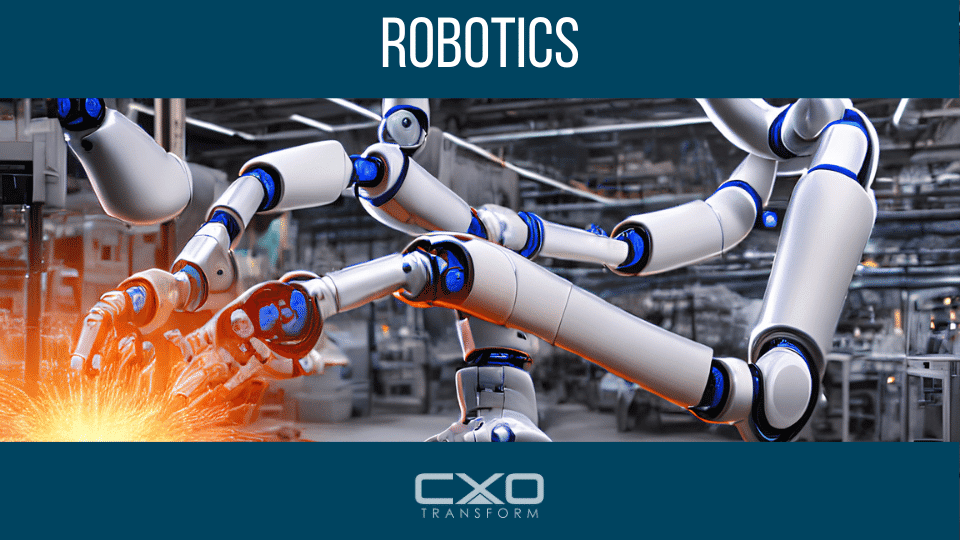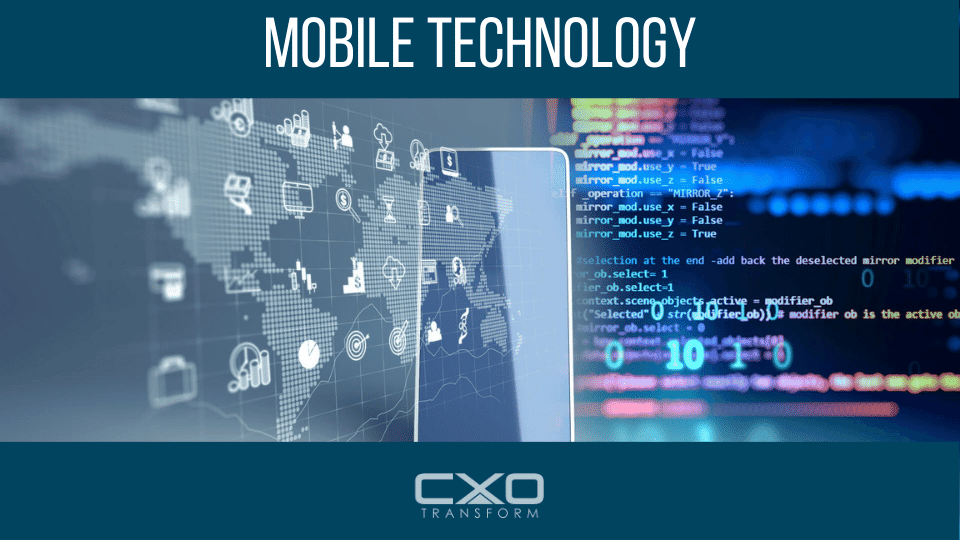Innovation Definition
Innovation is about having the ability or inclination to create or introduce new and original ideas, methods, or products. It refers to the ability to think creatively and develop novel solutions to problems or opportunities. And an innovative person or organisation is one that is capable of generating fresh ideas and turning them into practical and useful outcomes. But let's go deeper.

What Does Innovative Mean?
Innovation can take many forms, from incremental improvements to existing products or processes to disruptive new inventions or entirely new business models. It is often driven by changes in customer needs, market dynamics, or technological advancements. Innovation can lead to significant competitive advantages, increased productivity, and improved quality of life for individuals and society as a whole.
To be innovative, individuals and organisations need to be willing to take risks, challenge assumptions, and constantly learn and adapt to changing circumstances. They need to have a culture of openness, experimentation, and continuous improvement, where failure is viewed as an opportunity for learning and growth. Successful innovation requires a combination of creativity, knowledge, and practical implementation skills, as well as the ability to collaborate effectively with others.
Why is innovation so important?
Innovation is important because it drives growth, creates new opportunities, and helps organisations stay competitive in an ever-changing business landscape. Here are a few reasons why innovation is so important:
It drives growth: Innovation enables companies to develop new products and services that can attract new customers and generate additional revenue streams, leading to growth and expansion.
It creates new opportunities: Innovation can open up new markets, create new industries, and provide new business models and opportunities for entrepreneurs and investors.
It helps organisations stay competitive: Companies that fail to innovate risk falling behind their competitors who are developing new and better products and services that meet the changing needs of customers.
It solves problems: Innovation can lead to the development of new technologies and solutions that can solve societal and environmental challenges, making the world a better place.
It increases efficiency: Innovation can improve processes and systems, leading to increased efficiency, reduced costs, and better-quality products and services.
Incremental and Disruptive Innovation
Incremental and disruptive innovation are two types of innovation that companies can pursue to stay competitive and drive growth. Here's a brief overview of each:
Incremental innovation
Incremental innovation involves making small improvements to existing products, services, or processes. The goal of incremental innovation is to make existing offerings more efficient, user-friendly, or cost-effective. Examples of incremental innovation include adding new features to a product, improving a manufacturing process, or enhancing a service delivery method.
Disruptive innovation
Disruptive innovation involves creating entirely new products, services, or processes that disrupt the existing market and fundamentally change the way things are done. Disruptive innovations can create new markets, displace established industry players, and transform entire industries. Examples of disruptive innovation include the introduction of personal computers, smartphones, and ride-sharing services.
Both incremental and disruptive innovation are important for companies to stay competitive and grow their business. Incremental innovation allows companies to refine and optimise existing products and processes, while disruptive innovation can create new growth opportunities and change the game in the marketplace. Companies that can balance both types of innovation can set themselves up for long-term success.
What is the Best Definition of Innovation?
Innovation is the process of creating and implementing new ideas, products, or processes that add value and solve problems in new and better ways. It involves generating and developing ideas, and then transforming those ideas into practical and valuable outcomes.
Innovation can take many forms, from incremental improvements to existing products or processes to breakthrough inventions and entirely new business models. It can be driven by technological advancements, changes in customer needs and behaviours, or shifts in market dynamics.
Successful innovation requires a combination of creativity, knowledge, and practical implementation skills. It involves taking risks, challenging assumptions, and constantly learning and adapting to changing circumstances. Innovation can lead to significant competitive advantages, increased productivity, and improved quality of life for individuals and society as a whole.
Innovation is often a collaborative process that involves bringing together individuals with diverse backgrounds, skills, and perspectives. It requires a culture of openness, experimentation, and continuous improvement, where failure is viewed as an opportunity for learning and growth.
What are 5 Types of Innovation?
There are several ways to classify types of innovation, but here are four common categories:
Product innovation
Product innovation is the process of developing new or improved products or services that provide increased value or benefits to customers. It can involve creating products that are entirely new to the market or making improvements to existing products that enhance their performance, features, or user experience.
Product innovation can be driven by a variety of factors, including changes in customer needs, emerging technologies, or shifts in market dynamics. It requires a combination of creativity, knowledge, and practical implementation skills, as well as a deep understanding of customer needs and preferences.
Product Innovation Examples
Here are three examples of product innovation:
Apple iPhone
The iPhone revolutionised the mobile phone market with its combination of sleek design, touch-screen interface, and robust app ecosystem. The iPhone represented a major step forward in the development of smartphones and has continued to evolve with each subsequent release.
Tesla electric cars
Tesla's electric cars are a prime example of product innovation in the automotive industry. By introducing fully electric vehicles with advanced features such as autonomous driving and over-the-air software updates, Tesla has disrupted the traditional automotive market and set a new standard for innovation in the industry.
3D printing
3D printing technology represents a major innovation in the manufacturing industry, enabling the creation of complex and customisable objects with unprecedented precision and speed. 3D printing has the potential to revolutionise industries from healthcare to construction and is already being used to produce everything from prosthetic limbs to custom homes.
Product innovation is a critical driver of growth and profitability for many companies, and those that are able to consistently introduce new and innovative products are often the most successful. However, it requires significant investment in research and development, as well as a willingness to take risks and experiment with new ideas.
Process innovation
Process innovation is the development of new or improved methods, systems, or procedures for producing goods or delivering services. It can result in increased efficiency, reduced costs, or improved quality of the output.
Process innovation can involve making changes to existing processes, such as automating manual tasks or reducing waste, or developing entirely new processes that offer new capabilities or features. The goal is to improve the overall efficiency and effectiveness of operations, ultimately leading to better products and services.
Process innovation can be driven by factors such as changes in technology, customer needs, or market competition. It requires a deep understanding of existing processes and the ability to identify areas for improvement.
Process Innovation Examples
Here are three examples of process innovation:
Lean manufacturing
Lean manufacturing is a process innovation that focuses on reducing waste and improving efficiency in the production process. By eliminating non-value-added activities and streamlining production flows, companies can reduce costs, increase quality, and improve customer satisfaction.
Robotic process automation
Robotic process automation (RPA) is a process innovation that uses software robots to automate repetitive, rule-based tasks. By automating these tasks, companies can reduce errors, increase speed, and free up human workers to focus on higher-level tasks.
Agile software development
Agile software development is a process innovation that emphasises collaboration, flexibility, and iterative development. By breaking projects down into smaller, more manageable pieces and involving all stakeholders in the development process, companies can reduce time-to-market, increase customer satisfaction, and improve quality.
Process innovation is a critical component of digital transformation, as it enables organisations to better leverage the capabilities of new technologies and stay ahead of changing market conditions. By continuously improving processes, organisations can increase efficiency, reduce costs, and improve the quality of their products and services, ultimately leading to greater customer satisfaction and profitability.
Business model innovation
Business model innovation involves the creation of new or the modification of existing business models to better respond to customer needs and market conditions. It can involve changes in revenue models, pricing structures, or distribution channels.
Business model innovation is often driven by changes in technology or shifts in customer behaviour and can lead to the development of new revenue streams, increased customer loyalty, or expanded market opportunities. It requires a deep understanding of the underlying economics of the business, as well as an ability to identify and respond to changing market conditions.
Business model innovation Examples
Here are three examples of business model innovation:
Amazon Web Services
Amazon Web Services (AWS) is a cloud computing service that allows businesses to rent computing resources on an as-needed basis. By enabling businesses to pay only for what they use, AWS disrupted the traditional IT infrastructure market and created a new revenue stream for Amazon.
Spotify
Spotify is a music streaming service that offers both free and premium subscriptions. By creating a new revenue model based on ad-supported and subscription-based streaming, Spotify disrupted the traditional music industry and has become a dominant player in the music streaming market.
Dollar Shave Club
Dollar Shave Club is a subscription-based service that delivers razors and other grooming products directly to customers. By creating a direct-to-consumer business model and cutting out traditional retail channels, Dollar Shave Club disrupted the shaving industry and has since been acquired by Unilever for $1 billion.
Business model innovation is a critical component of digital transformation, as it enables organisations to respond to changing market conditions and better leverage the capabilities of new technologies. By continuously refining and adapting their business models, organisations can stay ahead of the competition, grow revenue, and achieve long-term success.
Organisational innovation
Organisational innovation involves the development of new or improved structures, management systems, or cultural practices within an organisation. The goal is to enhance an organisation's ability to innovate and adapt to changing market conditions.
Organisational innovation can involve changes in leadership, decision-making processes, or employee engagement practices. It requires a culture of openness, experimentation, and continuous improvement, where failure is viewed as an opportunity for learning and growth.
Organisational innovation Examples
Here are three examples of organisational innovation:
Google's 20%-time policy
Google's 20%-time policy allows employees to spend one-fifth of their work time pursuing projects of their own choosing. This policy fosters a culture of innovation, encourages risk-taking, and has led to the development of many successful products, such as Google News and AdSense.
Zappos' holacracy
Zappos' holacracy is a management structure that replaces traditional hierarchy with a distributed network of self-organising teams. This structure enables greater agility, creativity, and innovation, and allows employees to have more autonomy and ownership over their work.
Buurtzorg
Buurtzorg is a healthcare organisation in the Netherlands that operates with a self-managing team structure. The organisation has no managers and relies on teams of nurses to manage their own caseloads and make decisions collaboratively. This structure has resulted in greater job satisfaction, improved patient outcomes, and reduced costs.
Organisational innovation is a critical driver of digital transformation, as it enables organisations to create an environment where new ideas can flourish, and innovation can thrive. By investing in organisational innovation, organisations can foster a culture of innovation, improve their ability to respond to changing market conditions, and create a sustainable competitive advantage.
Innovation can take many forms, and organisations that are able to leverage multiple types of innovation are often the most successful. By developing new products, improving processes, adapting business models, and fostering a culture of innovation, organisations can gain a competitive edge and stay ahead of changing market conditions.
Strategic Innovation
Strategic innovation refers to the process of creating and implementing new ideas and approaches that support a company's overall strategy and business goals. It involves identifying opportunities for growth and competitive advantage, developing new products and services, and improving existing processes to increase efficiency and effectiveness.
Strategic innovation is a proactive approach to innovation that focuses on long-term planning and development, rather than reacting to market changes or customer demands. It requires a deep understanding of the company's mission, vision, and values, as well as the external environment in which it operates.
Strategic Innovation Examples
Here are three examples of strategic innovation:
Tesla
Tesla's strategy of introducing electric cars into the mass market is an example of strategic innovation. Rather than simply developing a more efficient gasoline-powered car, Tesla created a new market for electric vehicles, using innovative technologies and business models to disrupt the existing automotive industry.
Amazon
Amazon's strategy of developing its own ecosystem of hardware and software products, such as the Kindle, Echo, and Alexa, is an example of strategic innovation. By building its own products and services, Amazon has created a seamless customer experience and a competitive advantage in the e-commerce and cloud computing markets.
Procter & Gamble
Procter & Gamble's Connect+Develop program is an example of strategic innovation. The program is designed to bring external innovation into the company by partnering with startups, inventors, and researchers to develop new products and technologies. This has allowed P&G to tap into new markets and technologies and keep pace with changing consumer needs and preferences.
These are just a few examples of strategic innovation, and there are many others across a range of industries and sectors. The common thread is a focus on creating and implementing new ideas and approaches that support the company's overall strategy and business goals.
Strategic innovation can involve different types of innovation, such as product, process, or business model innovation, and can be driven by internal R&D efforts or through external partnerships and collaborations. It is a key factor in staying ahead of competitors and maintaining relevance in an ever-changing market.
Frameworks for Innovation
There are many different frameworks that can be used to guide innovation efforts in organisations. Here are a few commonly used frameworks for innovation:
Design thinking
This framework focuses on human-centred design, involving understanding the needs and wants of customers or users, ideating potential solutions, prototyping, and testing, and iterating based on feedback.
Lean startup
This framework emphasises rapid experimentation, using a “build-measure-learn” approach to quickly test new products or services in the market, gathering data and feedback, and adjusting based on what is learned.
Agile
This framework is used in software development and involves iterative and incremental development, collaboration, and a focus on delivering value quickly and frequently.
Open innovation
This framework involves collaborating with external partners, such as customers, suppliers, or even competitors, to develop new products, services, or processes.
Blue ocean strategy
This framework involves creating new markets or industries, rather than competing within existing ones. It involves identifying untapped customer needs or pain points and creating unique offerings that address them.
These are just a few examples of innovation frameworks that companies can use to guide their innovation efforts. The right framework will depend on the specific goals, resources, and context of the organisation.
10 Innovation Quotes
Here are 10 innovation quotes.
Innovation distinguishes between a leader and a follower.
– Tom Peters
Innovation is the central issue in economic prosperity.
– Michael Porter
Innovation is the unrelenting drive to break the status quo and bring something new to life.
– Richard Branson
Innovation is the specific instrument of entrepreneurship… the act that endows resources with a new capacity to create wealth.
– Peter Drucker
Innovation is the creation of the new or the re-arranging of the old in a new way.
– Michael Vance
Innovation distinguishes between a leader and a follower.
– Steve Jobs
Innovation is the outcome of a habit, not a random act.
– Sukant Ratnakar
Innovation needs to be part of your culture. Consumers are transforming faster than we are, and if we don't catch up, we're in trouble.
– Ian Schafer
Innovation is the result of a constant struggle between the idea and the reality.
– Jules de Gaultier
Innovation is the lifeblood of progress.
– Ben Carson
What is Technology Innovation
Technology innovation refers to the process of creating new or improved products, services, or processes that leverage technological advancements or breakthroughs. It involves the development of new technologies, the improvement of existing ones, and the adoption and application of these technologies to solve problems, meet customer needs, and drive business growth.
Technology innovation can involve the development of hardware, software, systems, and other digital or physical products. It can also involve the integration of various technologies to create new products or services that improve efficiency, effectiveness, and overall quality of life.
The Process of Technology Innovation
The process of technology innovation typically involves the following steps:
Ideation
Ideations is the process of generating and developing ideas for new or improved technologies. This can involve brainstorming sessions, market research, customer feedback, and other techniques to identify needs and opportunities for innovation.
Research and development
Once an idea has been selected, the next step is to research and develop the technology. This can involve a range of activities, including scientific research, engineering, prototyping, testing, and refinement.
Commercialisation
Once the technology has been developed, the next step is to bring it to market. This involves developing a go-to-market strategy, creating a business plan, securing funding, building partnerships, and launching the product or service.
Adoption and diffusion
This is the process of getting the technology into the hands of users and promoting its adoption. This can involve marketing, sales, customer support, and other activities to encourage early adopters and build momentum.
Continuous improvement
Finally, technology innovation is an ongoing process that requires continuous improvement. This involves monitoring feedback, analysing data, and making updates and improvements to the technology over time.
15 Technologies to Innovate With
Artificial Intelligence
Innovating with artificial intelligence (AI) involves using machine learning and other AI technologies to create new products, services, and processes that improve efficiency, effectiveness, and overall quality of life.

Take a course about artificial intelligence in digital transformation.
Digital Twin
Innovating with digital twin involves using a virtual model of a physical object or system to create new products, services, and processes that improve efficiency, effectiveness, and overall quality of life.

Take a course about innovating with digital twin in digital transformation.
Virtual Reality
Innovating with virtual reality (VR) involves creating immersive, three-dimensional computer-generated environments that simulate real-world experiences.

Take a course about innovating with virtual reality in digital transformation.
Machine Learning
Innovating with machine learning involves using algorithms and statistical models to enable computers to learn from data and make predictions or recommendations.

Take a course about innovating with machine learning in digital transformation.
Big Data Analytics
Innovating with big data analytics involves using large and complex data sets to uncover insights and trends that can inform decision-making and drive business growth.

Take a course about innovating with big data analytics in digital transformation.
Robotics
Innovating with robotics involves designing, building, and programming machines to perform tasks that are typically performed by humans.

Take a course about innovating with robotics in digital transformation.
Mobile Technology
Innovating with mobile technology involves creating new products, services, and processes that leverage the capabilities of mobile devices to improve efficiency, effectiveness, and overall quality of life.

Take a course about innovating with mobile technology in digital transformation.
Cloud Computing
Innovating with cloud computing involves creating new products, services, and processes that leverage the capabilities of cloud-based infrastructure and platforms to improve efficiency, effectiveness, and overall quality of life.

Take a course about innovating with cloud computing in digital transformation.
Internet of Things
Innovating with the Internet of Things (IoT) involves creating new products, services, and processes that leverage the capabilities of connected devices to improve efficiency, effectiveness, and overall quality of life.

Take a course about innovating with the internet of things in digital transformation.
Robotic Process Automation
Innovating with Robotic Process Automation (RPA) involves automating repetitive and mundane business processes using software robots that mimic human actions.

Take a course about innovating with robotic process automation in digital transformation.
Augmented Reality
Innovating with Augmented Reality (AR) involves creating new products, services, and processes that use computer-generated images or other digital content to enhance or augment the physical world.
Take a course about innovating with augmented reality in digital transformation.
Hyperautomation
Innovating with hyperautomation involves using a combination of advanced technologies such as Artificial Intelligence, Robotic Process Automation (RPA), and Machine Learning to automate complex business processes.
Take a course about innovating with hyperautomation in digital transformation.
Blockchain
Innovating with Blockchain involves creating new products, services, and processes that use distributed ledger technology to provide secure, transparent, and tamper-resistant transactions.
Take a course about innovating with blockchain in digital transformation.
Quantum Computing
Innovating with Quantum Computing involves creating new products, services, and processes that use the principles of quantum mechanics to perform computations that are beyond the capabilities of classical computers.
Take a course about innovating with quantum computing in digital transformation.
Metaverse
Innovating with the Metaverse involves creating new products, services, and experiences that use virtual and augmented reality to create an immersive and interactive shared digital environment.
Take a course about innovating with the metaverse in digital transformation.
Technology Innovation Practitioner Program
The Technology Innovation Practitioner Program is where you can learn how to innovate with all of the technologies listed above.

